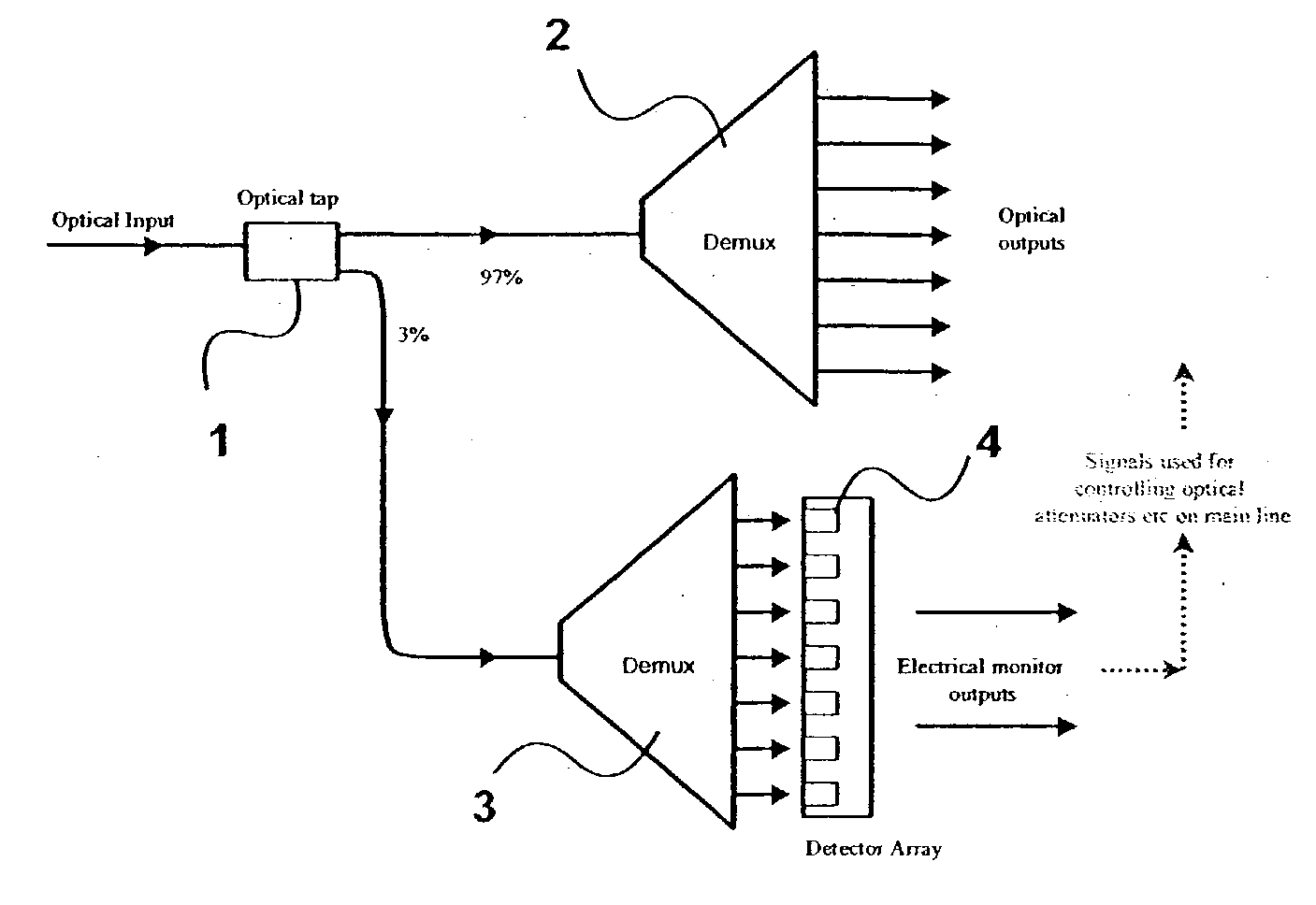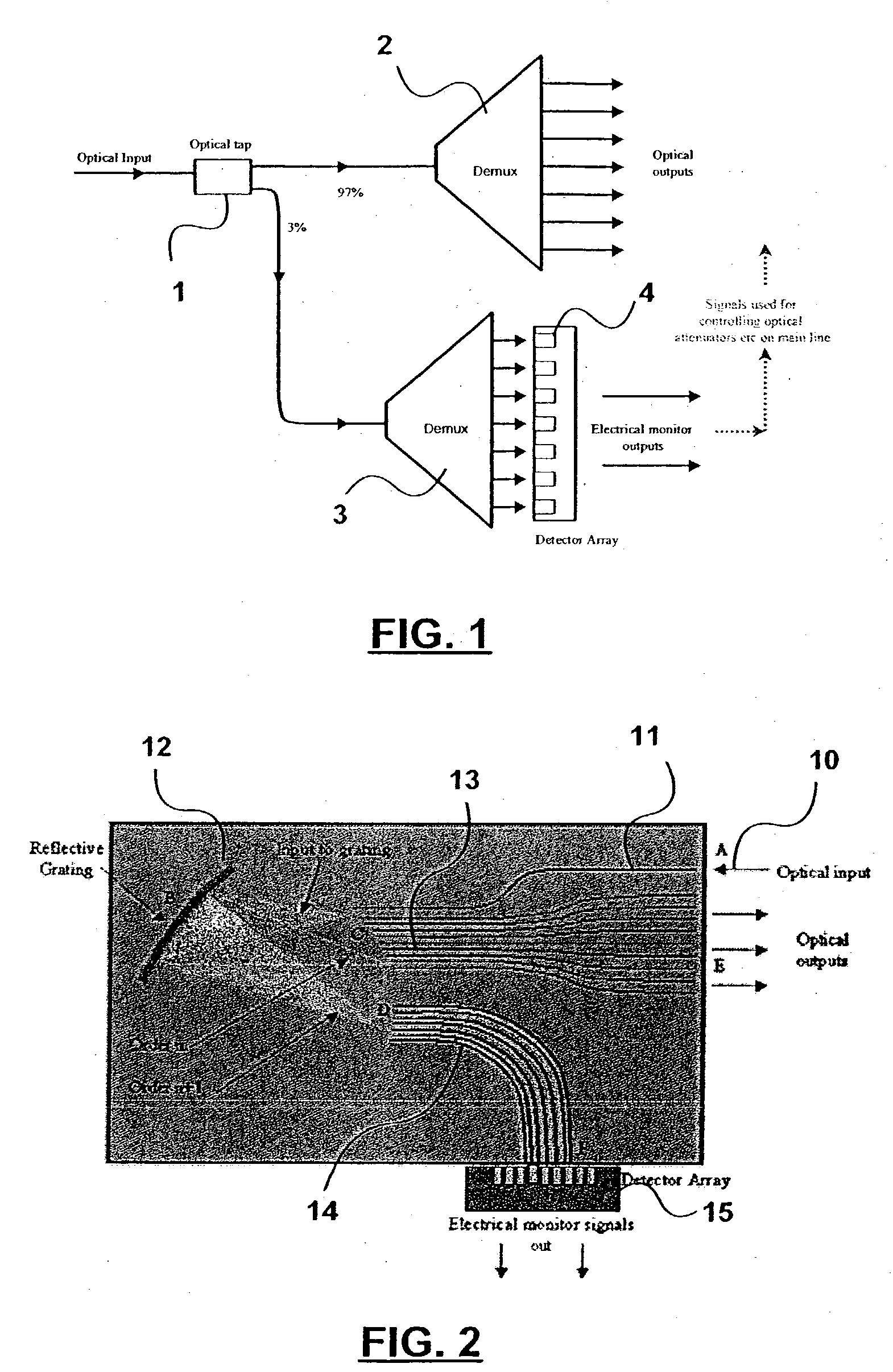Device for integrating demultiplexing and optical channel monitoring
a demultiplexing and optical channel technology, applied in the field of photonics, can solve the problems of large devices that are difficult to manufacture, have potential pdl problems, and often exhibit polarization dependent loss of optical taps
- Summary
- Abstract
- Description
- Claims
- Application Information
AI Technical Summary
Problems solved by technology
Method used
Image
Examples
example no.2
EXAMPLE NO. 2
[0026] In the embodiment shown in FIG. 3 an optical signal 10 consisting of many different wavelength channels is input to the input waveguide 11 at A. The device operation is identical to that described in Example No. 1, with the main optical signal being demultiplexed and output through order n. However, in this example there are also monitor output waveguides 16 positioned to collect light of order n+1, as well as n-1. The monitor output waveguides 14 for order n+1 can be identical to those described in Example No. 1, positioned on-grid at channel center, and provide information on the power in each channel. The monitor outputs for order n-1, however, can be positioned off-grid, e.g. between channels, and provide information on the inter-channel noise.
[0027] The outputs can also be designed so that the ratio between complementary detectors is a known function of wavelength, which allows the device to monitor the wavelength of each channel. This can be accomplished, f...
PUM
 Login to View More
Login to View More Abstract
Description
Claims
Application Information
 Login to View More
Login to View More - R&D
- Intellectual Property
- Life Sciences
- Materials
- Tech Scout
- Unparalleled Data Quality
- Higher Quality Content
- 60% Fewer Hallucinations
Browse by: Latest US Patents, China's latest patents, Technical Efficacy Thesaurus, Application Domain, Technology Topic, Popular Technical Reports.
© 2025 PatSnap. All rights reserved.Legal|Privacy policy|Modern Slavery Act Transparency Statement|Sitemap|About US| Contact US: help@patsnap.com



